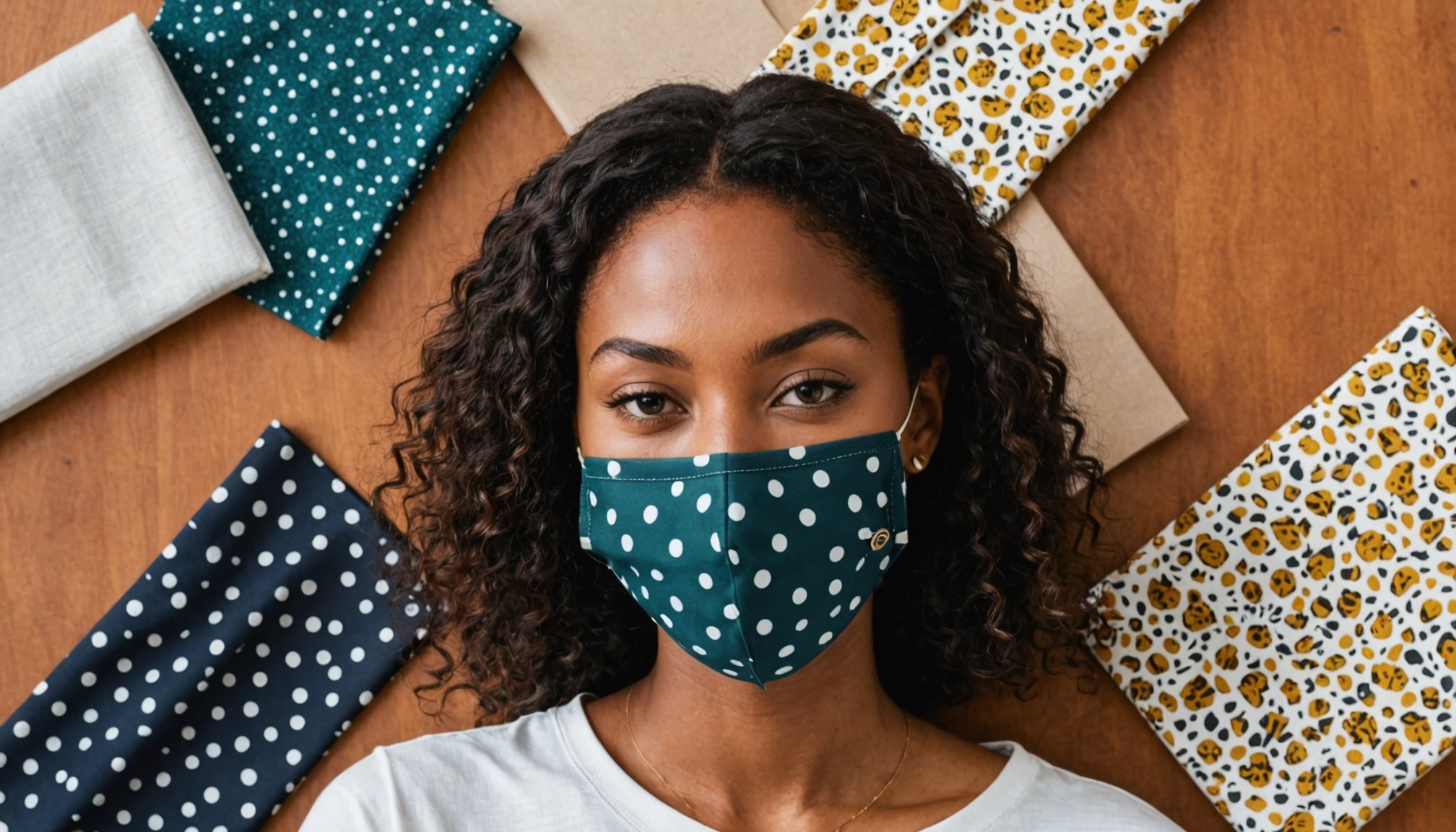Understanding the Importance of Fabric Selection
Choosing the right fabric selection for face masks is paramount for several reasons. At its core, fabric qualities such as breathability, comfort, and protection play a pivotal role. Breathability ensures that wearers can comfortably breathe, even during prolonged wear. Fabrics like tightly-woven cottons are often recommended for their durability while still remaining breathable.
Style doesn’t take a backseat, though. The significance of fabric patterns and colors is also noteworthy in crafting chic and stylish masks. Vibrant patterns can make a fashion statement while solid colors may lend a more professional appearance. Selecting the right pattern can therefore not only reflect personal taste but also enhance the mask’s visual appeal.
Also to read : Achieve Gorgeous Beach Waves with Ease: Your Guide to Effortless Sleek Styles,slugslug
Finally, the effectiveness of DIY face masks is heavily influenced by the choice of fabric. Not all fabrics offer the same level of protection against contaminants. Layering different fabrics can provide added filtration, but the primary layer should always prioritize safety. For example, choosing a fabric that can form a snug seal around the nose and mouth is crucial to maintaining both protection and comfort.
Trendy Fabric Options for Chic Face Masks
Achieving a stylish and effective face mask begins with exploring trendy fabrics. Known for its combination of comfort and durability, cotton fabrics are a top choice for DIY face masks. Their breathability doesn’t compromise on filtration, making them both a safe and stylish option.
Also to read : Unlock the Secret: Ultimate Guide to Chic and Comfortable Work-From-Home Attire
Cotton Fabrics
Cotton’s natural fibres create a comfortable wear experience, offering both coziness and effectiveness. The material’s ability to absorb moisture helps prevent irritation, which is particularly beneficial during extended use. For those seeking fashion-forward vibes, cotton prints provide a vast array of patterns and colors to complement any outfit.
Linen and Blends
Linen, a fabric celebrated for its lightweight and airy nature, maintains its shape during lengthy exposures, ensuring both protection and fashionable flair. Blending linen with other materials like cotton can further elevate its utility, adding a softer touch and enhanced flexibility.
Other Fashionable Materials
For those seeking unique touches, silk and rayon offer luxurious aesthetics and smooth textures. While not traditionally used solely for filtration, in combination with more robust layers, these fabrics can enhance mask appeal. Silk boasts a sheen, attracting attention with its reflective properties, while rayon’s draping characteristics present an alternative avenue for elegance.
Pairing Fabrics with Different Styles
Fabric pairing enhances your face mask’s aesthetic while ensuring functionality. Understanding how to match fabric patterns with outfits can elevate your daily wear. Start by identifying your wardrobe’s predominant colors. Use these as a guide to choose fabric patterns that either complement or provide a stylish contrast. For instance, a floral mask can add a playful touch to a monochrome outfit, while a solid-color mask may balance a vibrant ensemble.
Creating cohesive looks requires thoughtful combinations. Utilize complementary colors to craft a harmonious appearance. When choosing fabric combinations, consider mixing textures like cotton with a subtle shimmer of silk for an elegant touch. This juxtaposition not only boosts style but also retains comfort.
When aiming to enhance style, experiment with layered fabrics. Combine materials like breathable linen with the luxurious feel of rayon for a unique, fashion-forward mask. These pairings can infuse your mask with depth and character, addressing both fashion and function. Embracing this approach to fabric pairing ensures your mask complements any attire, staying relevant to both current trends and personal tastes.
Practical Sewing Advice for DIY Face Masks
Creating your own face mask offers both a personal touch and a practical solution to mask-making. To start, you’ll need a few essential tools and materials. Gather a needle and thread or a sewing machine, fabric scissors, pins, and your chosen fabrics. Don’t forget a flexible measuring tape and elastic bands for securing the masks.
Essential Tools and Materials
With tools in hand, follow these step-by-step sewing instructions to make your mask. First, cut two rectangles of fabric, roughly 9×6 inches. Sew these pieces together, with the outer sides facing each other. Turn the sewn fabric right side out and pin three evenly spread pleats. Stitch around the edges to secure. Attach elastic bands to the mask’s shorter sides, securing them with a double stitch for durability.
Customizing Mask Designs
You can add personal touches by customizing your mask designs. Choose fabrics that reflect your personality or match your attire. Consider incorporating features like a nose wire for a snug fit or a pocket for a filter. These additions can enhance both the functionality and style of your DIY face masks.
Safety and Maintenance Considerations
Ensuring mask safety is an integral part of your mask-making journey. First, examine your chosen fabric for tight weaves that ensure effective protection. A snug fit is crucial for preventing air leakage around the edges, maximising safety. The flexibility and fit of a mask should never come at the cost of safety, so consider incorporating adjustable features like elastic bands.
Regular fabric care is essential. Masks must be washed after each use to maintain hygiene and efficiency. Use warm water and a mild detergent for effective cleaning. High-temperature fabrics may be tumble-dried; others should be air-dried to preserve their characteristics. Regular laundering maintains cleanliness and functionality.
Maintenance goes beyond cleaning, into proper storage. When not in use, keep masks in a dry, ventilated area to prevent moisture build-up. This prolongs the fabric’s integrity and ensures that the mask is ready for use when needed. Adequate maintenance tips are invaluable for keeping your DIY masks both effective and visually appealing. By incorporating these guidelines, you secure both the safety and longevity of your handmade masks.







